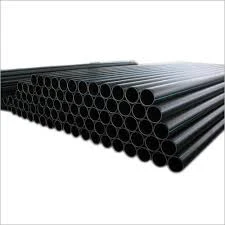Oct . 07, 2024 03:42 Back to list
hdpe conduit pipe
Understanding HDPE Conduit Pipe A Comprehensive Overview
High-Density Polyethylene (HDPE) conduit pipe has emerged as a popular choice in various industries for its exceptional strength and flexibility. This innovative material offers several advantages over traditional conduit solutions, making it an ideal option for electrical and telecommunications applications. In this article, we will explore the benefits, applications, and installation techniques of HDPE conduit pipe.
What is HDPE?
HDPE, or High-Density Polyethylene, is a thermoplastic polymer made from petroleum. Renowned for its high tensile strength and durability, HDPE is resistant to impact, chemicals, and moisture, making it ideal for piping systems. The manufacturing process involves blowing or extruding the plastic into tubes, which are then used as conduits for protecting cables and other utilities.
Benefits of HDPE Conduit Pipe
One of the primary advantages of HDPE conduit pipe is its flexibility. Unlike rigid materials such as PVC or metal, HDPE can bend and curve, allowing for easy installation in complex environments. This flexibility reduces the need for additional fittings and joints, minimizing potential points of failure and making the overall system more robust.
Another significant benefit is its resistance to corrosion and chemical exposure. HDPE does not rust or corrode like metal pipes and can withstand a variety of chemicals, making it suitable for different environments, including underground installations. Additionally, HDPE conduit pipes are lightweight, which simplifies transport and reduces labor costs during installation.
Moreover, HDPE is highly resistant to UV radiation, ensuring durability even when exposed to sunlight. This characteristic is especially important for outdoor installations, where exposure to the elements can lead to degradation over time.
hdpe conduit pipe

Applications of HDPE Conduit Pipe
HDPE conduit pipes are widely used in various applications, particularly in the telecommunications and electrical sectors. They provide protection for fiber optic cables and electrical wiring, ensuring that essential communication and power systems operate smoothly. The flexibility of HDPE allows for seamless integration into existing infrastructure, making it an ideal choice for retrofitting projects.
Furthermore, HDPE is also used in water and wastewater management systems. Its ability to resist chemicals makes it suitable for handling both potable water and stormwater drainage applications.
Installation Techniques
The installation of HDPE conduit pipe requires specific techniques to ensure its longevity and effectiveness. Standard practices include trenching, where a trench is dug to lay the conduit at the required depth. In some cases, directional drilling may be employed to minimize ground disturbance, particularly in sensitive areas.
During installation, proper alignment and support are crucial to prevent pinch points or kinking in the pipe. HDPE conduit can be fused using heat techniques, which create a solid joint that is as strong as the pipe itself, enhancing the integrity of the entire system.
Conclusion
In summary, HDPE conduit pipe stands out as an effective solution for various piping needs, particularly in electrical and telecommunications applications. Its flexibility, resistance to corrosion, and UV stability make it a reliable choice for modern infrastructure. As industries continue to embrace greener and more efficient building practices, HDPE conduit pipe is poised to play a pivotal role in the future of construction and utility management.
-
High-Precision PVC Rigid Sheets for Vacuum Forming | AI-Optimized
NewsAug.05,2025
-
Durable PVC-M Water Supply Pipes | 60-Year Life
NewsAug.04,2025
-
Premium HDPE Water Supply Pipes: Durable & Leak-Proof
NewsAug.03,2025
-
Premium PVC-M Water Supply Pipe - Durable & Efficient
NewsAug.02,2025
-
HDPE Drainage & Irrigation Pipe - Durable, Efficient Solutions
NewsAug.01,2025
-
Premium PVC Transparent Pipe: Durable & Clear Solutions
NewsJul.31,2025

